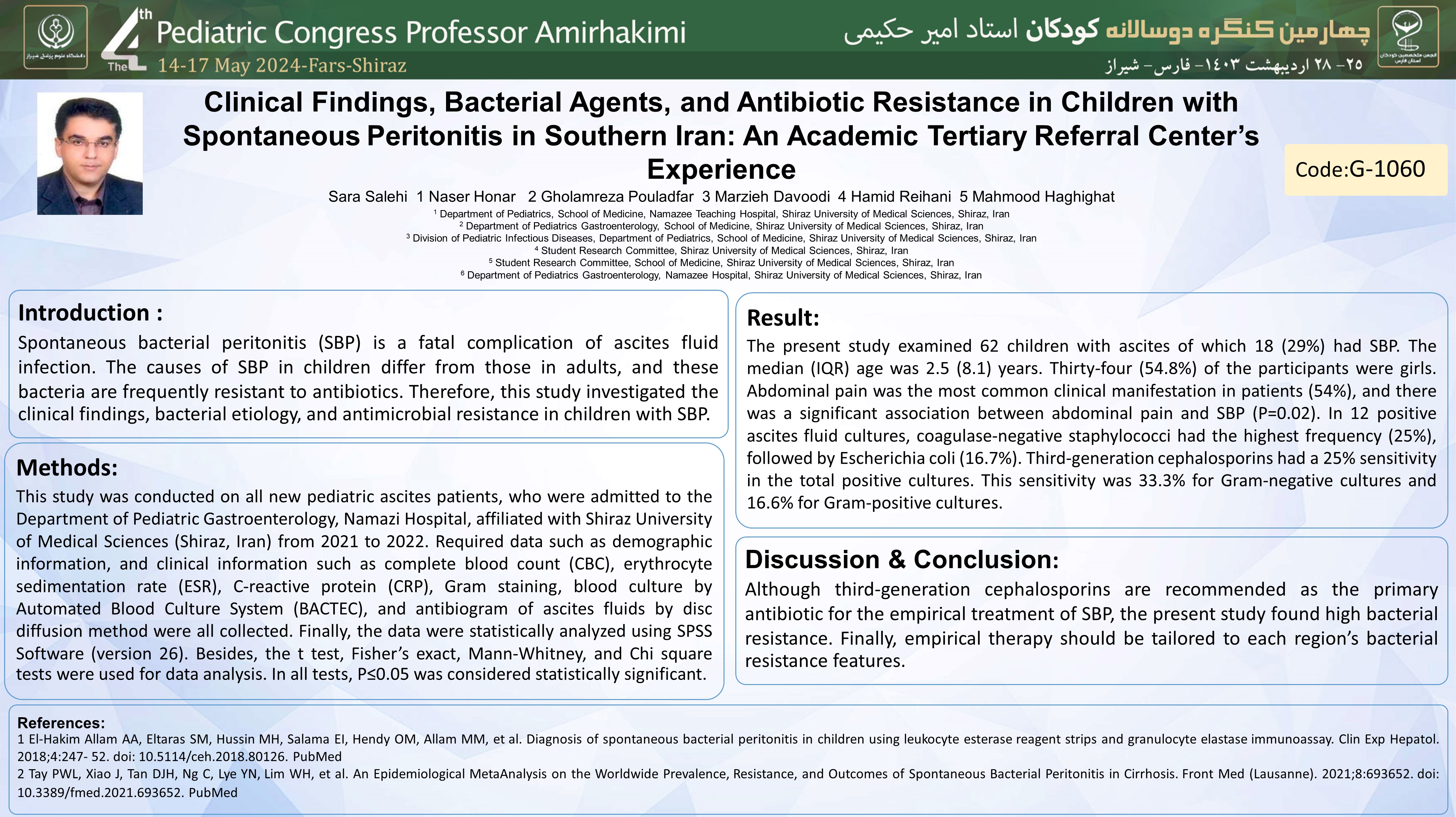یافتههای بالینی, عوامل باکتریایی و مقاومت آنتیبیوتیکی در کودکان مبتلا به پریتونیت خود به خودی در جنوب ایران: تجربه مرکز مراجعه عالی دانشگاهی
کد: G-1060
نویسندگان: Sara Salehi © ℗, Naser Honar, Gholamreza Pouladfar, Marzieh Davoodi, Hamid Reihani , Mahmood Haghighat
زمان بندی: زمان بندی نشده!
دانلود: دانلود پوستر
خلاصه مقاله:
خلاصه مقاله
Abstract Background: Spontaneous bacterial peritonitis (SBP) is a fatal complication of ascites fluid infection. The causes of SBP in children differ from those in adults, and these bacteria are frequently resistant to antibiotics. Therefore, this study investigated the clinical findings, bacterial etiology, and antimicrobial resistance in children with SBP. Methods: This study was conducted on all new pediatric ascites patients, who were admitted to the Department of Pediatric Gastroenterology, Namazi Hospital, affiliated with Shiraz University of Medical Sciences (Shiraz, Iran) from 2021 to 2022. Required data such as demographic information, and clinical information such as complete blood count (CBC), erythrocyte sedimentation rate (ESR), C-reactive protein (CRP), Gram staining, blood culture by Automated Blood Culture System (BACTEC), and antibiogram of ascites fluids by disc diffusion method were all collected. Finally, the data were statistically analyzed using SPSS Software (version 26). Besides, the t test, Fisher’s exact, Mann-Whitney, and Chi square tests were used for data analysis. In all tests, P≤0.05 was considered statistically significant. Results: The present study examined 62 children with ascites of which 18 (29%) had SBP. The median (IQR) age was 2.5 (8.1) years. Thirty-four (54.8%) of the participants were girls. Abdominal pain was the most common clinical manifestation in patients (54%), and there was a significant association between abdominal pain and SBP (P=0.02). In 12 positive ascites fluid cultures, coagulase-negative staphylococci had the highest frequency (25%), followed by Escherichia coli (16.7%). Third-generation cephalosporins had a 25% sensitivity in the total positive cultures. This sensitivity was 33.3% for Gram-negative cultures and 16.6% for Gram-positive cultures. Conclusion: Although third-generation cephalosporins are recommended as the primary antibiotic for the empirical treatment of SBP, the present study found high bacterial resistance. Finally, empirical therapy should be tailored to each region’s bacterial resistance features.
